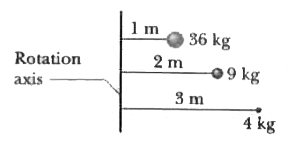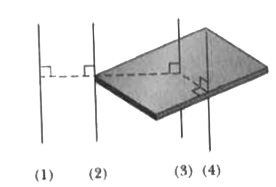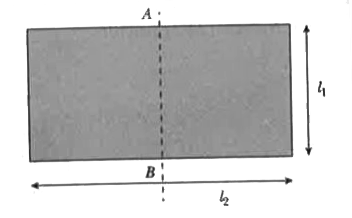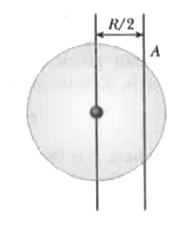CHECKPOINT from RESNICK AND HALLIDAY PHYSICS Chapter 30 RIGID BODY DYNAMICS - I for Class 12
| Class 12 | PHYSICS |
| Chapter | RIGID BODY DYNAMICS - I |
| RESNICK AND HALLIDAY PHYSICS | CHECKPOINT |
| Medium | English |
| Academic Year | 2023-2024 |
Question 3
A cockroach rides the rim of a rotating merry-go-round. If the angular speed of this system (merry-go-round + cockroach) is constant, does the cockroach have (a) radial acceleration and (b) tangential acceleration? If ω is decreasing, does the cockroach have ( c) radial acceleration and (d) tangential acceleration?View SolutionQuestion 10
The figure shows an overhead view of a meter stick that can pivot about the dot at the position marked 20 (for 20 cm). All five forces on the stick are horizontal and have the same magnitude. Rank the forces according to the magnitude of the torque they produce, greatest first.
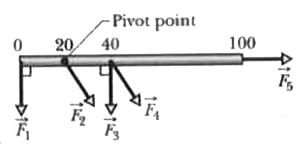 View Solution
View SolutionQuestion 13
The figure shows an overhead view of a meter stick that can pivot about the point indicated, which is to the left of the stick's midpoint. Two horizontal forces, →F1and→F2, are applied to the stick. Only →F1 is shown. Force →F2 is perpendicular to the stick and is applied at the right end. If the stick is not to turn, (a) what should be the direction of →F2, and (b) should F2 be greater than, less than, or equal to F1?
 View Solution
View SolutionQuestion 14
In part a of the figure, particles 1 and 2 move around point O in circles with radii 2 m and 4 m. In part b, particles 3 and 4 travel along straight lines at perpendicular distances of 4 m and 2 m from point O. Particle 5 moves directly away from O. All five particles have the same mass and the same constant speed. (a) Rank the particles according to the magnitudes of their angular momentum about point O, greatest first. (b) Which particles have neagtive angular momentum about point O?
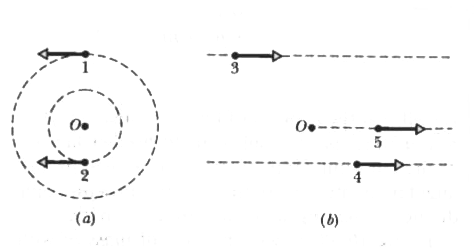 View Solution
View SolutionQuestion 15
The figure shows the position vector →r of a particle at a certain instant, and four choices for the direction of a force that is to accelerate the particle. All four choices lie in the xy plane. (a) Rank the choices according to the magnitude of the time rate of change (dl/dt) they produce in the angular momentum of the particle about point O, greatest first. (b) Which choice results in a negative rate of change about O?
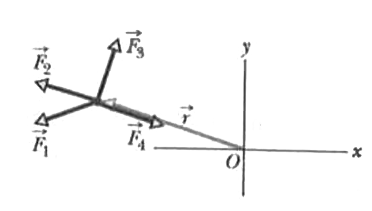 View Solution
View SolutionQuestion 16
A uniform disk, a thin hoop (ring), and a uniform sphere, all with the same mass and same outer radius, are each free to rotate about a fixed axis through its center. Assume the hoop is connected to the rotation axis by light spokes. With the objects starting from rest, identical forces are simultaneously applied to the rims, as shown. Rank the objects according to their angular momentum after a given time t, least to greatest.
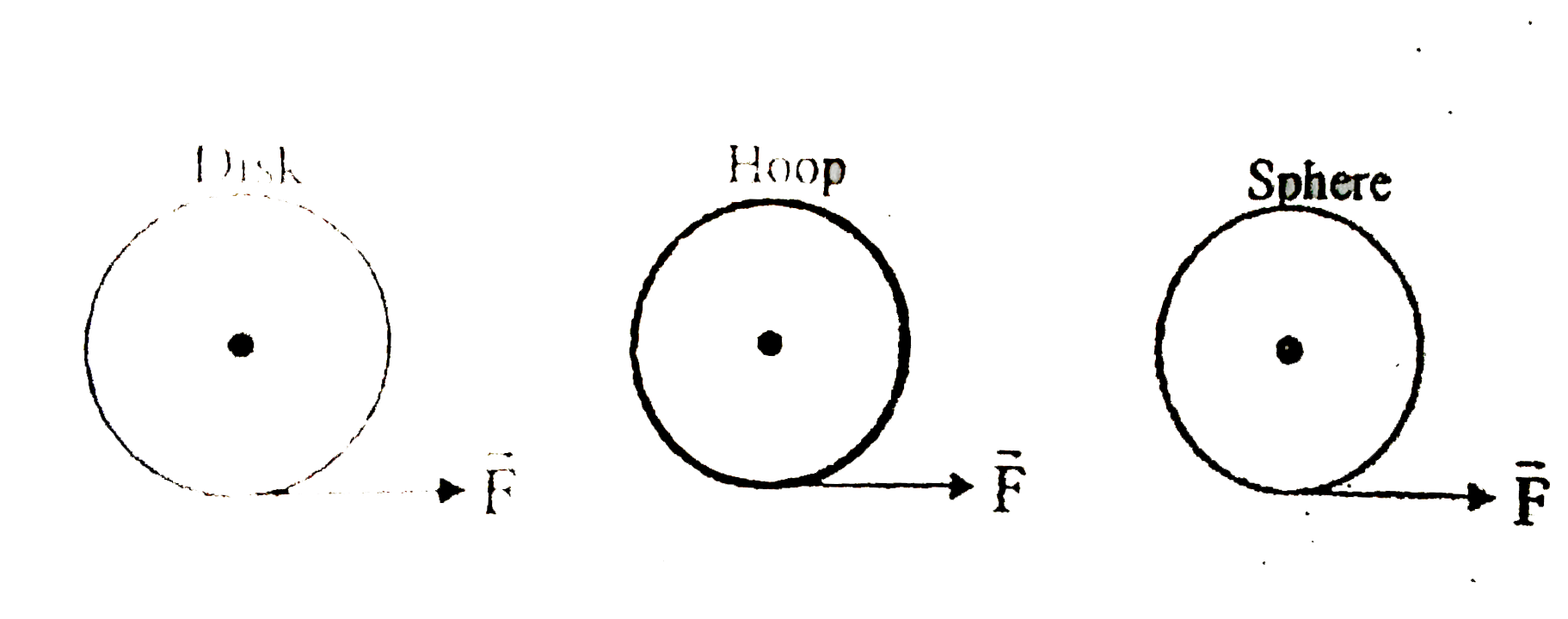 View Solution
View SolutionQuestion 17
A rhinoceros beetle rides the rim of a small disk that rotates like a merry-go-round. If the beetle crawls toward the center of the disk, do the following (each relative to the central axis) increase, decrease, or remain the same for the beetle-disk system: (a) rotational inertia, (b) angular momentum, and ( c) angular speed?View SolutionQuestion 18
A rod of mass 12 m and length l lying on a smooth horizontal plane can rotate freely about a stationary, vertical axis passing through the rod's end. A particle of mass m moving along the plane with speed v0 hits the rod's end perpendicularly and gets stuck there. Find the angular velocity of the system.
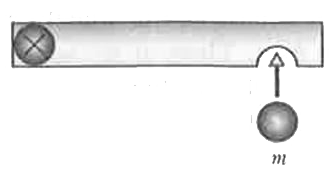 View Solution
View Solution
